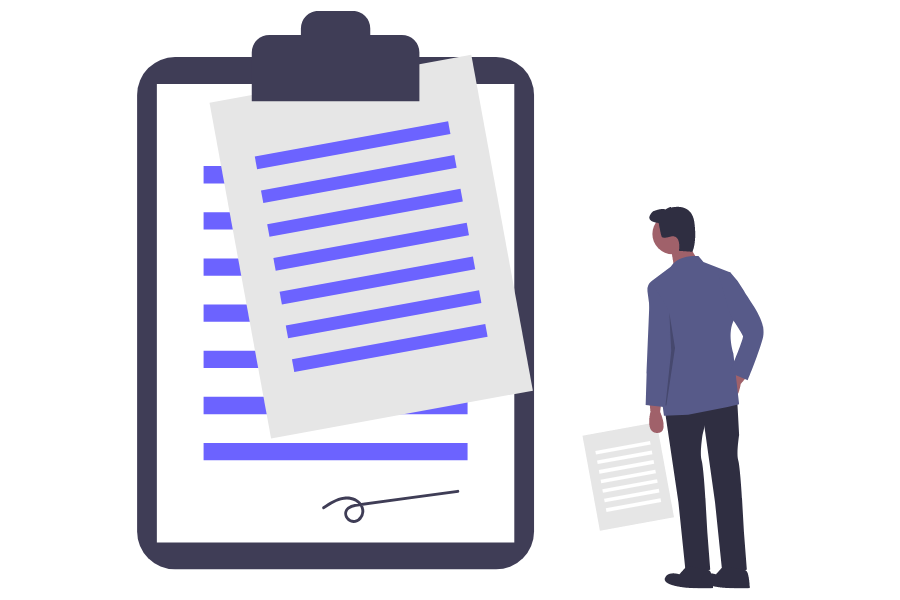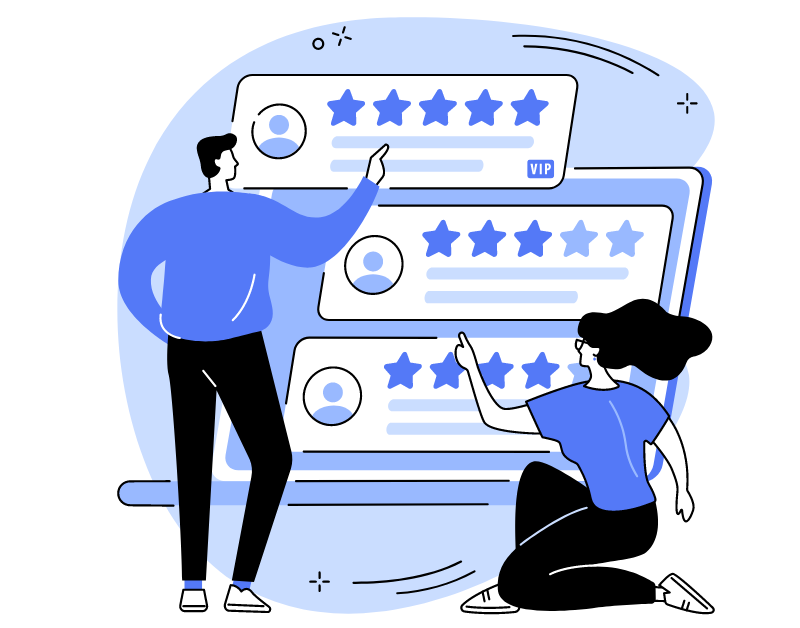We, the Oki-Toki team, develop and support cloud call center, from which customers expect stability, and from the support team promptness. With this, we are often asked: “How are things with your SLA?” This question usually arises from representatives of medium and large businesses, but sometimes there are exceptions. In this article, we answer the five most common questions about our SLA (Service Level Agreement).
What is an SLA indicator and what is it for?
SLA indicator, stands for “Service Level Agreement”, which means a service quality contract. Simply put, it’s a form of agreement between you and the company providing the services about how these services will work.
SLA is a key element of successful collaboration. It helps to establish the rules and standards that the service SIP provider will follow. After all, for business, it is important to have a promise that failures will be acceptably rare and to know when, where, and how to apply for technical support.
h3>Examples of conditions that may be included in the SLA (Service Level Agreement) for various services./h3>
These examples are general and can be adapted and augmented depending on the specifics of the service and the customer’s needs:
- Service Availability: “We guarantee 99% service availability to users each month. In case of service unavailability for more than 1 hour, compensation in the form of additional usage time is provided.”
- Response and reaction to queries: “User queries are reviewed and receive a response within 24 hours. Critical queries related to service functionality issues are handled within 2 hours.”
- Performance Level: “The declared performance of the service must not be below the set value (for example, the page load speed should not exceed 3 seconds). If the performance drops below the established indicators, an analysis is conducted and measures are taken to restore normal operation.”
- Data Backup and Restoration: “Data is backed up daily and stored for a duration of 30 days. Data restoration occurs within 4 hours following a user request.”
- Information Security: Security measures are employed, including data encryption, multi-factor authentication, and regular updates to the security system. Notification of any security breach is provided to users within 24 hours of detection.
Example of conditions included in the Oki-Toki SLA:
“Oki-Toki guarantees stable operations 24/7 and continuous improvement with the addition of new features and updates. Making changes may temporarily cause instability.”“External factors, such as power supply, server equipment, communication channels, malware, and information attacks, can affect the operation of Oki-Toki.”“Difficulties in using Oki-Toki may arise due to user side issues, such as an incompatible browser, unstable internet channel, or incorrect network equipment settings.”“The ‘Agreement’ document describes the responsibility of the Oki-Toki team, types of provided assistance, workability guarantees, and procedures for handling user issue reports.”“The term ‘Service’ refers to the Oki-Toki software-hardware suite, designed for contact center automation.”“The ticketing system provides answers, recommendations for problem resolution and notifications about problem resolution if it was on the side of the service.”
Note: These terms serve as an example of SLA for the service and can be supplemented or modified depending on the specific context and requirements of users and customers.
Why is an SLA necessary in business? It ensures that you get a full guarantee of meeting your expectations and the money invested. Nobody likes it when something doesn’t work, especially when it comes to business. SLA provides peace of mind, knowing that the service SIP provider will be responsible for their work and fix problems if they occur.
What indicators are included in the SLA?
The basic SLA indicators in the call center, which determine the performance, availability and reliability of services, and why they are so important to customers.
Let’s consider the main SLA indicators in a call center, and why they are so important to customers:
- Performance – this is a quantitative indicator. For instance:
minimum number of occupied lines,
maximum delay in selecting an agent,
maximum duration for generating reports.
- Availability – this is an indicator describing how accessible the service is at certain times. For example:
Maximum system response time to a user request,
Maximum allowable system or service downtime,
Share (percentage) of time the service will be available to customers.
- Reliability is a measure of system or service stability. For example:
Mean Time Between Failures (MTBF), indicating the stable operation of the system,
Mean Time To Restore (MTTR), determining the system recovery time after a failure,
Preventing data loss and ensuring their safety.
Considering these indicators, customers can be assured that the cloud call center and automatic customer call out will operate efficiently, reliably and conveniently, enabling them to successfully run their business and serve their customers.
What are the service SIP provider’s commitments under the SLA?
The service SIP provider’s commitments to the client under the SLA are a set of conditions and guarantees that the service SIP provider offers its clients. Examples of commitments offered by large companies under the SLA:
- Amazon Web Services (AWS):
A guarantee of cloud services availability of 99.99% annually.
Limited service recovery time after a failure, for instance, restoration of service functionality within 1 hour.
Guaranteed response time for critical support requests, for example, a response within 15 minutes.
- Microsoft Azure:
Guaranteed availability of virtual machines and cloud services of 99.95% monthly.
Maximum service recovery time after a failure, for instance, service recovery within 2 hours.
Guaranteed response time on support requests, for example, a reply within 1 hour.
- Google Cloud Platform (GCP):
Guarantee of cloud services availability of 99.95% annually.
Limited service recovery time after a failure, for instance, restoration of service functionality within 4 hours.
Guaranteed response time on support requests, for example, a reply within 1 hour.
The SLA also encompasses the levels of support that the SIP provider offers to clients, such as technical support and prompt responses to issues. Understanding these commitments and support levels allows clients to evaluate the reliability and quality of the services provided, as well as to have confidence in their execution.
What questions should you ask the SIP provider before signing the SLA?
Before signing the SLA, you should pose questions to the service SIP provider. These queries will help clarify the details and limitations of the SLA, as well as incident management processes and failure resolution. Here are some of them:
- What services does the SLA cover?
- What are the time frames and guarantees provided in the SLA? Clarify if there are specific service delivery time frames and what guarantees are offered if the deadlines are not met.
- What limitations are applied under the SLA? Learn about possible limitations such as service hours, scaling, or number of requests to understand how they might affect your operations.
- How are incidents managed and failures addressed? Find out how the SIP provider responds to issues and what incident management and failure remediation processes are in place. This will help you understand how quickly and effectively problems will be resolved.
By asking these questions, you’ll gain a clearer picture of what the SLA includes, how service delivery will be carried out, and what measures are in place to manage issues. This will help you make an informed choice before signing the SLA and set clear expectations for interaction.
How to monitor compliance with the SLA?
Monitoring the adherence to SLA is crucial to ensure the service SIP provider is performing their duties according to the contract. It demands constant supervision and periodic inspections. Here’s how it can be done:
- Keep track of the timelines specified in the SLA. If the SIP provider is not meeting their commitments in time, address this issue with them and find out the reasons for delays. Pay special attention to SLA Items related to response time and recovery after failures.
- Check the availability and performance of the provided services, if you notice any issues, instantly notify the SIP provider so they can take corrective measures. (Use services such as IFTT, Zapier, Microsoft Power Automate to automate this task)
- Keep an eye on updates and changes introduced by the service SIP provider. In case of changes, discuss them with the SIP provider and clarify how they might impact the SLA terms.
- Ensure that your SLA includes penalty and compensation mechanisms in case of a breach of terms. This will help safeguard your interests and receive compensation for services not provided.
SLA compliance monitoring will keep you abreast of the situation and ensure that the services you receive meet the contract. Use control methods to make sure that the SIP provider is fulfilling its obligations and delivering quality services.



